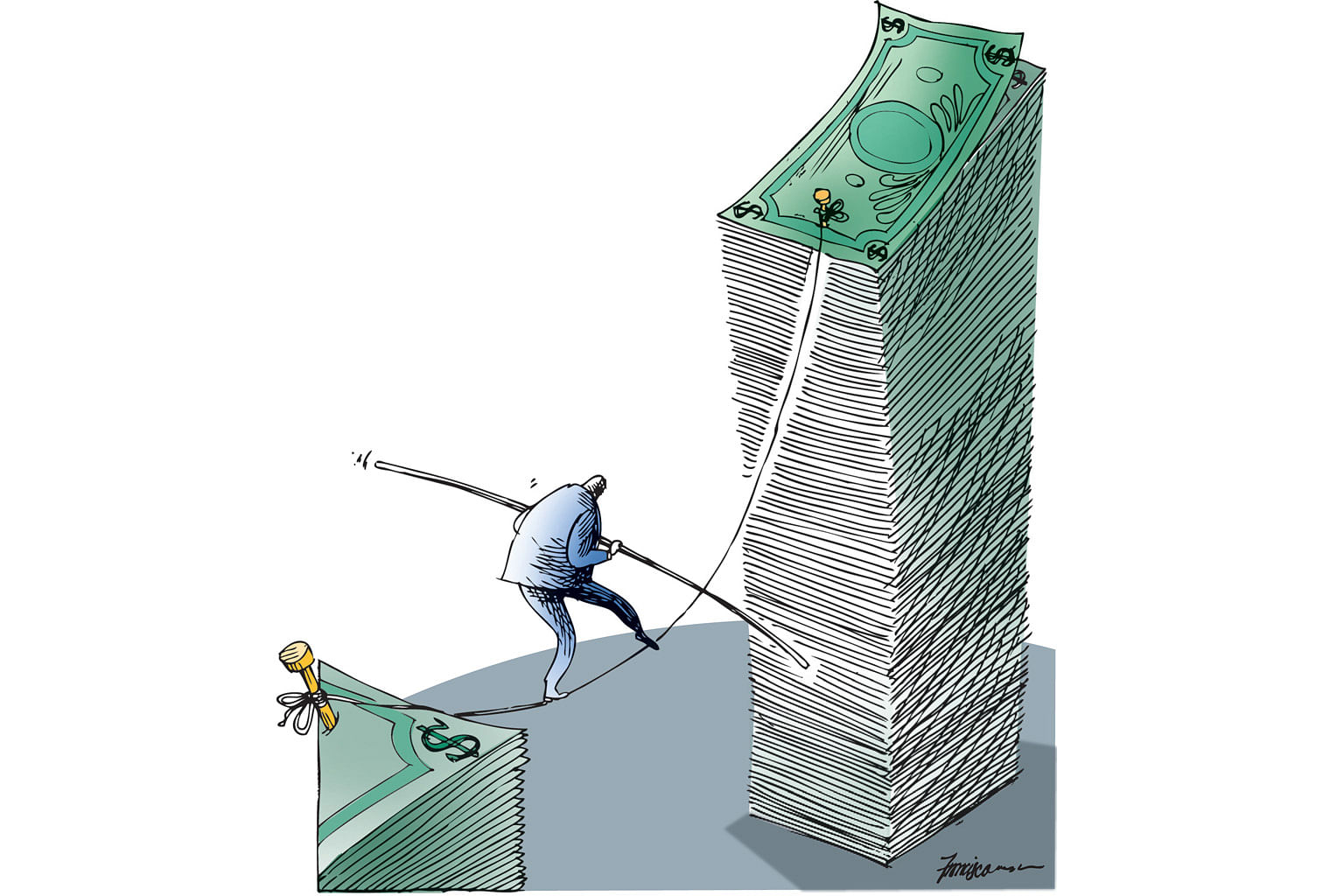In the earlier part of this decade, workers enjoyed several years of strong wage growth, thanks to a tight labour market. But the tables have turned and incomes are no longer rising as quickly.
With choppy economic conditions and technology-based "disruption" in the workplace, many feel unsure about their pay prospects, especially as flexible wage components tying salaries to business performance are commonplace.
Figures from the Ministry of Manpower (MOM) last month showed that a larger share of companies cut total wages last year compared with 2015, as almost a quarter of businesses racked up losses. Also, the share of employees who received a raise slipped last year, though they still made up three in four.
A main reason for this is that the labour market is less tight now than it was a few years ago, when strong economic growth was coupled with strict foreign manpower controls.
The Government has said it will not backtrack on its tight foreign labour policy, despite calls from firms. Instead, businesses and workers should focus on more productive and manpower-lean processes. This is key to ensuring that rising wages are sustainable.
A concern is that the real average monthly earnings of resident workers grew at about twice the rate of real labour productivity between 2005 and 2015, according to a Ministry of Trade and Industry (MTI) report last year.

If wages rise too fast, without being supported by productivity gains, it will be harder for Singapore to attract jobs.
Also, wages have been rising faster than inflation, which may seem a boon for workers, who are consumers as well. But National University of Singapore Business School economist Toh Mun Heng has pointed out that, without increased productivity, companies will lose competitiveness and be less able to sell their products or services, which may ultimately lead to retrenchments.
So whether wage growth is fast or slow should be viewed from a broader perspective, he said, while cautioning against too-rapid wage increases. "Slow wage growth commensurate with slow price increases - low inflation - is good for maintaining the competitiveness of the economy where you're able to sell your goods and keep employment sustainable," he said.
What, then, is the outlook for wages, and what have been the key factors in determining wage levels in recent years?
MEDIAN EARNERS
Many more jobs were available than workers to fill them - that was the happy situation for income earners from 2011 to 2015, when the economy was chugging along.
MOM data shows that for these years, after accounting for seasonal variations, the ratio of vacancies to unemployed people ranged from 1.07 in 2012, to 1.38 in 2014. It dropped to 0.91 last year.
Wages grew quickly. Real median incomes, including employer contributions to the Central Provident Fund (CPF), went up 3.1 per cent per year in the five years to June 2016 for Singaporeans working full-time. CPF contribution rates also went up.
But real economic growth slowed to 1.9 per cent in 2015, and 2 per cent last year, down from the growth rates of at least 3.6 per cent in the earlier part of the decade.
Firms have been grappling with global uncertainties around China's growth, weak oil prices and election outcomes in western Europe and the United States.
Besides that, economic restructuring at home means some companies in less viable sunset industries find it hard to grow and thus raise salaries. Without big improvements in productivity, it would be hard for firms to justify good pay increments in this climate. This has had an impact on the average worker.
Last year, Singaporeans in full-time work took home a median gross pay of $3,823 a month, including employer CPF contributions. They saw their income grow by 1.3 per cent, after adjusting for negative inflation.
This was in sharp contrast to a year earlier, when the increase was a stellar 7 per cent in real terms.
The outlook for Singapore's economic growth is still patchy, and so is the outlook for salaries.
The MTI's official growth forecast for the year is 1 to 3 per cent, although it now expects it to come in higher than 2 per cent.
Recruiters and unionists expect wages in general to stay stagnant for this year and the next, or at best rise only marginally. For one thing, companies need to manage their costs in the face of rising global competition and the gig economy.
Disruptive technologies are also affecting jobs. While technology can lead to cheaper products, it can also suppress wages for workers in companies that compete only on price, not innovation.
Singapore National Employers Federation president Robert Yap, a member of the National Wages Council (NWC), reiterated last month that pay rises need to be sustainable.
"Employers may not be afraid to give an increment, but can we keep on giving? It is very difficult to give one year and the next year take it back," he said, during the release of the council's annual wage recommendations.
The latest statistics for the first quarter of this year show that although unemployment is still low, the labour market overall is less tight than before, so employers can be more selective in hiring.
In such a market, workers in general should not expect too much by way of pay increments or incentives, though companies that perform well should share the rewards with their staff.
LOW-WAGE WORKERS
Thankfully, special attention has been paid to low-wage workers, with their pay propped up by wage support policies.
From June 2011 to June 2016, real income at the 20th percentile for Singaporean full-time workers rose an average of 3.2 per cent per year, including employer CPF contributions. This was faster than growth at the median level.
Policies like the Workfare Income Supplement - to top up the incomes of low-wage workers - and the progressive wage model have played a big role.
Labour MP Zainal Sapari said he is "cautiously optimistic" that low-wage workers will still see better wage growth. This is because of efforts being made by unions, employers and the Government to review the progressive wage model to provide sustainable pay rises over the next few years, said the assistant secretary-general at the National Trades Union Congress, who heads the unit overseeing low-wage workers.
The NWC, in its annual wage recommendations last month, called on employers to give an increment in monthly pay of $45 to $60 in the year ahead to workers earning a basic salary of up to $1,200 a month.
GROWTH SECTORS
There is good news for others as well - the uneven economic growth means that while job prospects in some sectors like oil and gas are dim, other industries are hungry for workers.
MOM expects more new jobs in sectors such as finance and insurance, information and communications, healthcare and some parts of manufacturing, including biomedical, precision engineering and electronics.
Workers in the banking and finance industry, for example, can expect to see a modest 3 per cent growth in wages this year, said recruitment firm Kelly Services Singapore's managing director and country head Foo See Yang.
But even within growth industries, not all roles are equal.
Wage increments are likely to be confined to niche roles requiring specialised skill sets and experience, said ManpowerGroup Singapore's country manager Linda Teo. "These roles are in demand but have very small talent pools," she explained.
Mr Foo said skills in demand are in the areas of risk and compliance, e-commerce, user experience or user interface design, data analytics and cyber security.
Recruitment firm Michael Page Singapore's director, Mr Jeffrey Ng, said employers also value soft skills in communication, presentation and stakeholder management.
So it is not just about identifying sunrise industries, but also the specific skills that will set oneself apart.
The wages outlook, then, is mixed. Wages for those at the basic level are set to continue to be supported by supplements. Mid-level wages may see slower growth due to uneven economic expansion and shrinking profits in some sectors. And wages for employees possessing in-demand skill sets are set to keep rising.
The best way for workers to adjust to these changing circumstances, advises labour MP Patrick Tay - who is also an NTUC assistant secretary-general - is to have a positive mindset to stay able, agile and adaptable.
Joanna Seow



